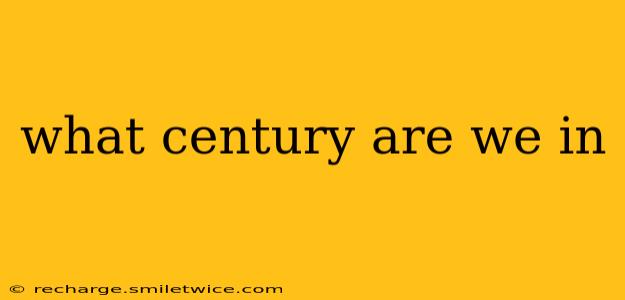We are currently in the 21st century. This century began on January 1, 2001, and will continue until December 31, 2100. Understanding centuries is fundamental to comprehending historical timelines and placing current events within a broader context.
How Do We Determine Centuries?
Centuries are periods of 100 years. They are numbered sequentially, beginning with the 1st century (1-100 AD/CE), the 2nd century (101-200 AD/CE), and so on. It's important to note that the beginning and end years often cause confusion. A century always starts with the year "01" and ends with the year "00." This means that years like 1900 were part of the 19th century, not the 20th.
Frequently Asked Questions About Centuries:
Here are some common questions people ask about centuries, and their answers:
What year did the 20th century end?
The 20th century ended on December 31, 2000. The year 2000 was the final year of that century. Many people mistakenly believe it ended in 1999, but the logic of century numbering clearly places it in the 20th century.
What year did the 21st century begin?
The 21st century began on January 1, 2001. This aligns with the sequential numbering system of centuries.
How many years are in a century?
There are 100 years in a century. This consistent length allows for easy calculation of time periods spanning multiple centuries.
What is the difference between a century and a millennium?
A century spans 100 years, while a millennium is a period of 1000 years (ten centuries). Millennia mark even larger segments of time in history. We are currently in the 3rd millennium (2001-3000).
The Importance of Understanding Centuries
Accurately identifying centuries helps us with:
- Historical Context: Placing events in their correct century provides crucial context for understanding historical trends, movements, and societal changes.
- Time Management and Planning: In academic research, historical analysis, project planning and many other fields, accurately understanding and calculating centuries is essential.
- Clear Communication: Avoiding confusion about century boundaries ensures precise communication when discussing historical periods or timelines.
Understanding the structure and numbering of centuries is a fundamental aspect of historical awareness and time management. By clarifying the concept and addressing common misconceptions, we can foster a more accurate understanding of historical periods and contemporary events within a broader temporal framework.
